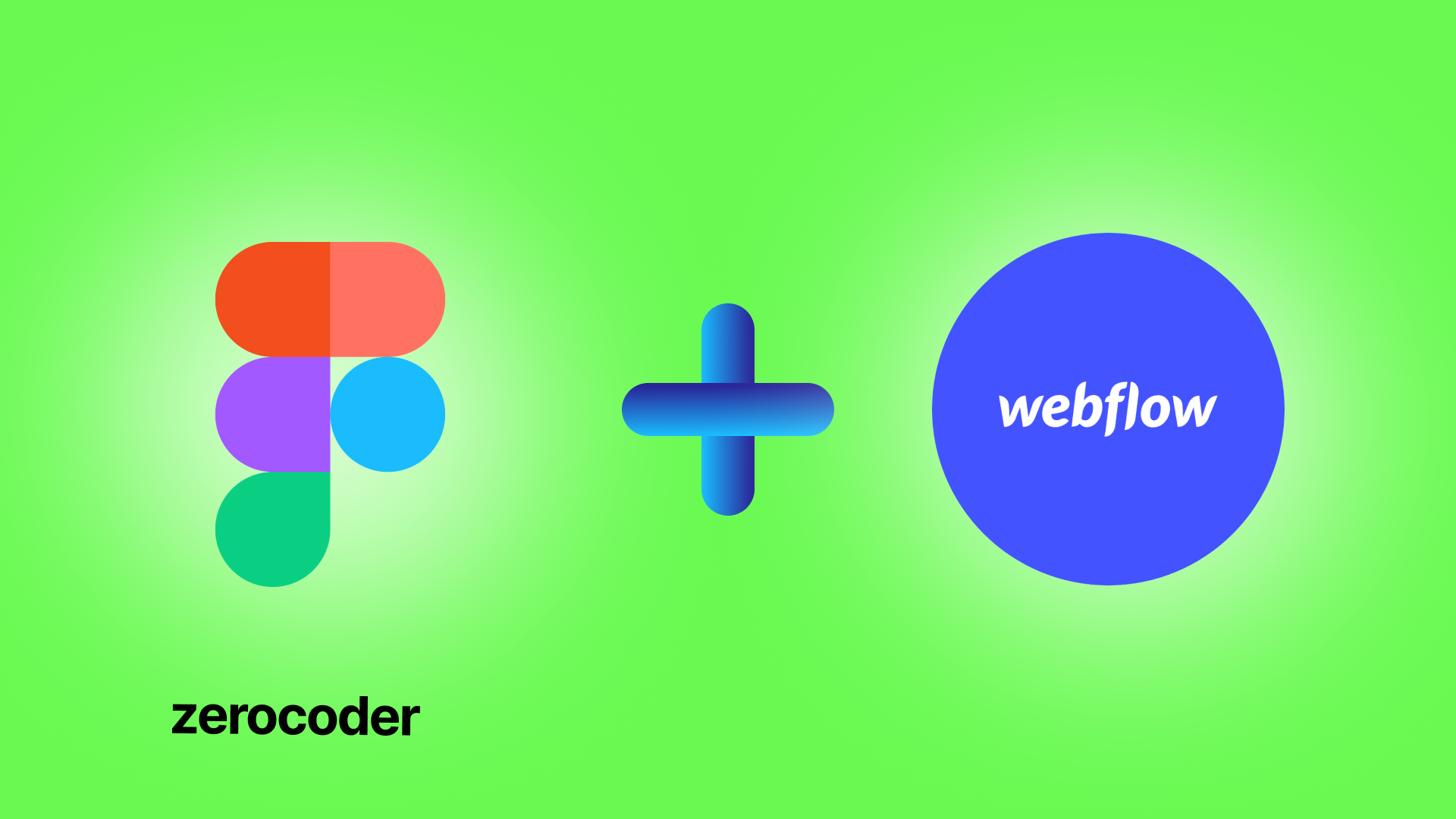Introduction
In the realm of digital design and development, the fusion of Figma and Webflow stands as a beacon of innovation, streamlining the transition from conceptual design to functional websites. This article embarks on a journey to explore the seamless integration between Figma, a collaborative design tool cherished for its real-time co-editing features, and Webflow, a powerful platform that brings designs to life without the need for traditional coding. By bridging the gap between these two platforms, we unlock a workflow that is not only efficient but also harmonizes the creative vision with technical execution, setting a new standard for digital projects.
If you want to learn how to NoCode but cannot find good courses for your education, we can proudly provide some on our platform. Check the button below for more information.
Understanding Figma and Webflow

Figma stands as a revolutionary design tool, embraced by UI/UX designers for its cloud-based interface and collaborative features. This platform enables multiple designers to work on the same project in real-time, streamlining the design process and fostering a more dynamic exchange of ideas. Its vector graphics editor and prototyping capabilities make it a comprehensive tool for creating interactive designs that are both innovative and user-friendly.
Webflow offers a unique solution that bridges the gap between design and development. It is a visual web development platform that allows designers to construct responsive websites without the need to write code. By offering a suite of design, animation, and hosting tools, Webflow empowers users to bring their designs to life with precision and creativity. It's particularly lauded for its ability to translate design concepts into production-ready websites, all within a visual canvas that mirrors traditional design software.
The Significance of Integration

The integration of Figma and Webflow is a game-changer in the digital creation space. It marries the ideation and visual design prowess of Figma with the dynamic, code-free development environment of Webflow. This partnership is pivotal for teams aiming to expedite the design-to-development workflow, ensuring a seamless transition from concept to fully functional websites. The ability to directly import Figma designs into Webflow not only streamlines project timelines but also minimizes the loss of design fidelity often encountered when translating designs into code.
By understanding the individual strengths and core functionalities of Figma and Webflow, one can appreciate the significance of their integration. This synergy not only enhances productivity but also elevates the quality of the final product, providing a cohesive platform for designers and developers to collaborate effectively.
In the next sections, we'll delve into the technicalities of how this integration works, offer a step-by-step guide on leveraging it.
If you have a business idea but lack good developers, submit it to our website, and talented employees will find you.
How the Integration Works

The Figma to Webflow integration is facilitated by the use of plugins and direct import features that allow for the seamless transfer of design elements from Figma into the Webflow platform. This process typically involves:
- Design Preparation in Figma: Designers ensure that their Figma files are organized, with clear naming conventions for layers and components. This organization is crucial for a smooth transfer process.
- Using Plugins or Tools: There are specific plugins and third-party tools designed to bridge Figma designs directly into Webflow, such as Figma's own Webflow plugin or external services that convert Figma files into Webflow-compatible formats.
- Importing to Webflow: Once the Figma design is prepared and processed through the chosen plugin or tool, the next step is to import the design into Webflow. This process converts the design into HTML, CSS, and JavaScript, which are the building blocks of web development.
- Refinement and Development in Webflow: After import, designers and developers can refine the design within Webflow, utilizing its visual editor to adjust layouts, add interactions, and ensure responsiveness across devices.
Step-by-Step Guide

- Start with a Finished Figma Design: Finalize your website design in Figma, paying special attention to organization and component naming.
- Choose a Plugin or Tool: Select a plugin or tool that best suits your project's needs for converting Figma designs to Webflow.
- Export from Figma: Use the plugin or tool to export your design. Follow any specific instructions provided by the plugin for the best results.
- Import into Webflow: Import the exported design into Webflow. This may involve uploading a file or syncing through the plugin.
- Adjust and Refine: Make necessary adjustments in Webflow to ensure the design is responsive and interactive elements work as intended.
Best Practices and Tips

- Keep Your Designs Organized: Clarity and organization in your Figma files will significantly impact the ease of transfer to Webflow.
- Understand Webflow's Limitations: While Webflow is powerful, it may not support every design feature from Figma. Understanding these limitations can help in planning and executing designs that translate well.
- Iterate and Test: Don't expect the first import to be perfect. Plan for iterations and test the design in Webflow, making adjustments as necessary.
- Utilize Community Resources: Both Figma and Webflow have active communities and resources. Utilize forums, tutorials, and guides to navigate any challenges.
By following these steps and keeping best practices in mind, designers and developers can leverage the strengths of both Figma and Webflow to create stunning, functional websites more efficiently than ever.
If you want to find a NoCode job, you can do it on our platform. Click the button below for more information.
Conclusion
The integration of Figma and Webflow represents a significant advancement in the web design and development industry, offering a cohesive and efficient pathway from design concept to fully functional website. This synergy not only saves time and resources but also ensures that the original design vision is preserved with high fidelity in the final product. As the digital landscape continues to evolve, the collaboration between designers and developers becomes increasingly crucial, with tools like Figma and Webflow leading the charge towards a more integrated and dynamic future.





